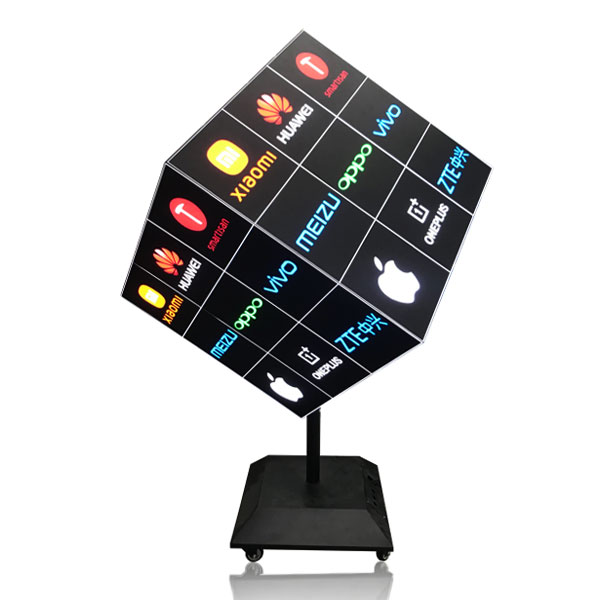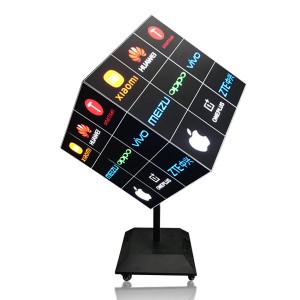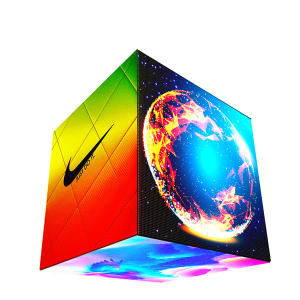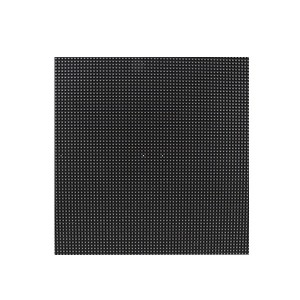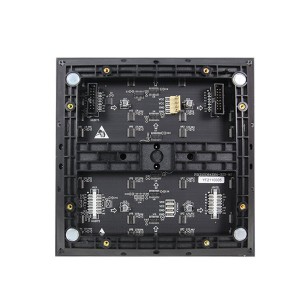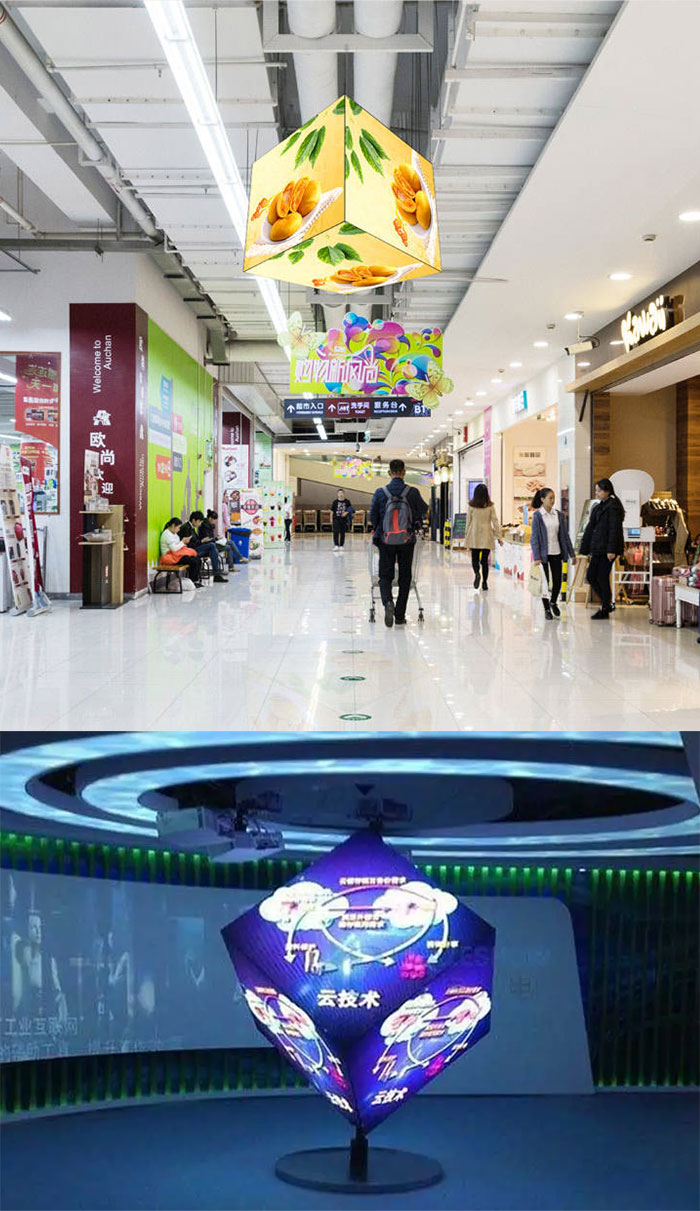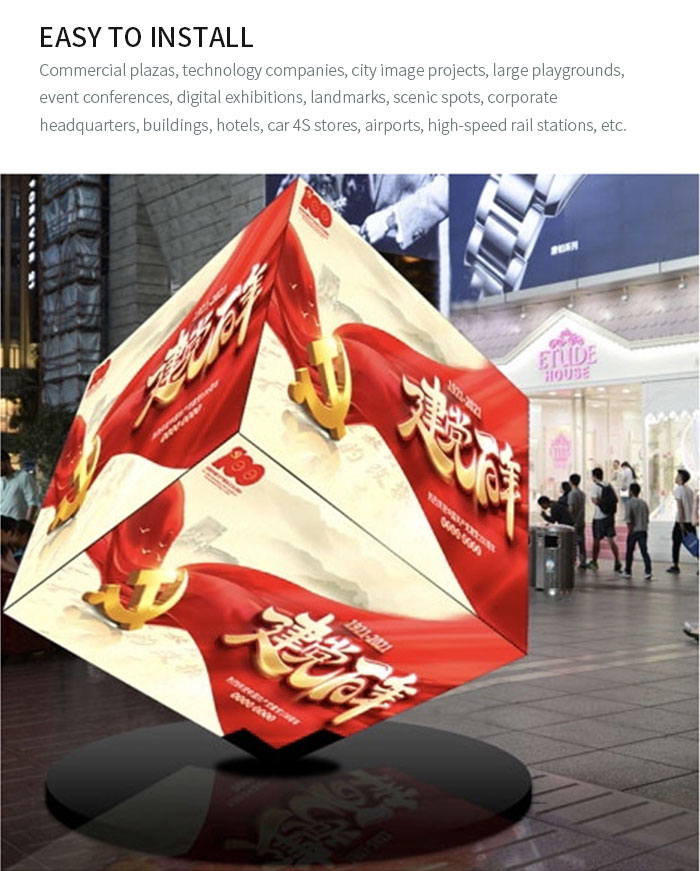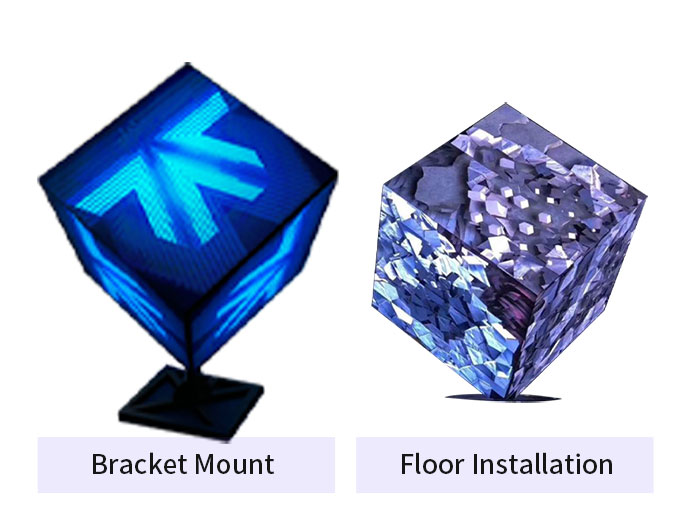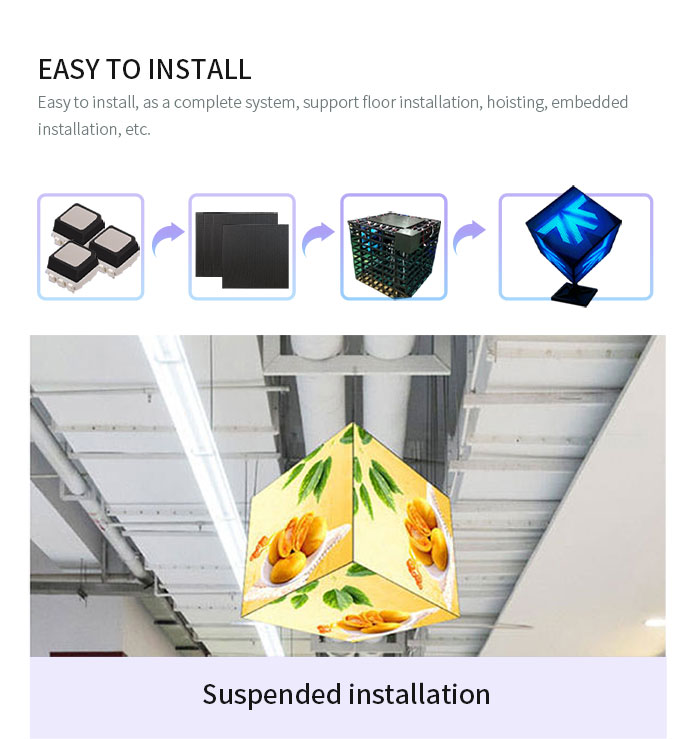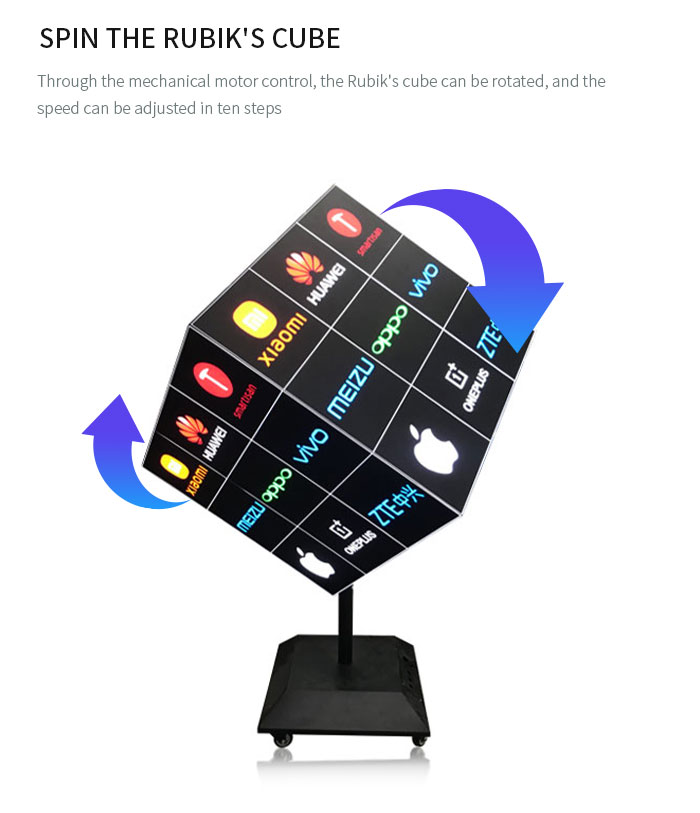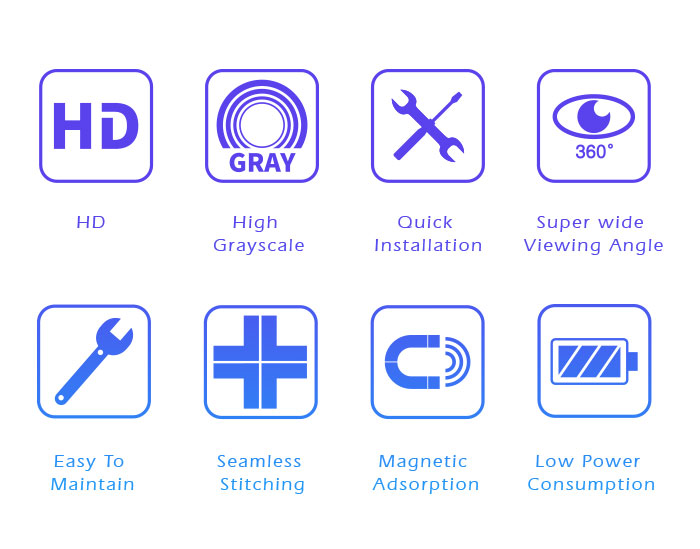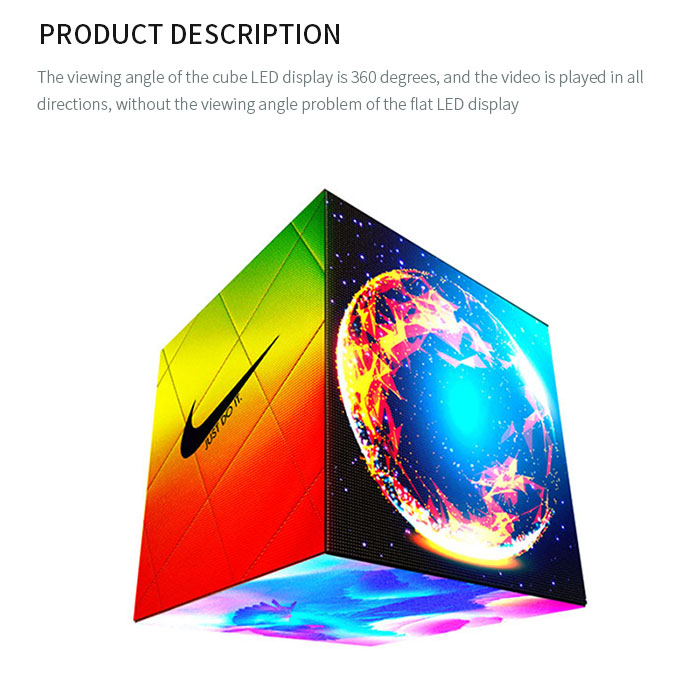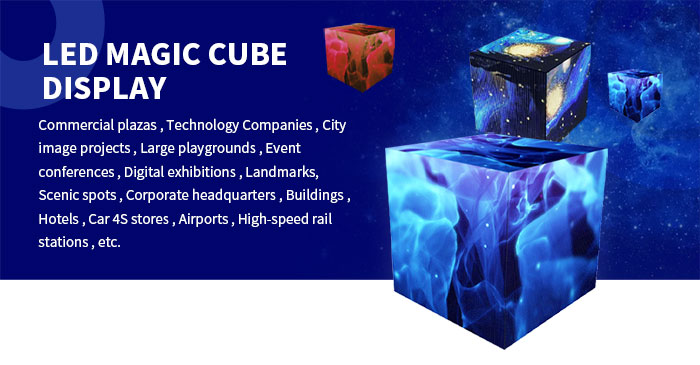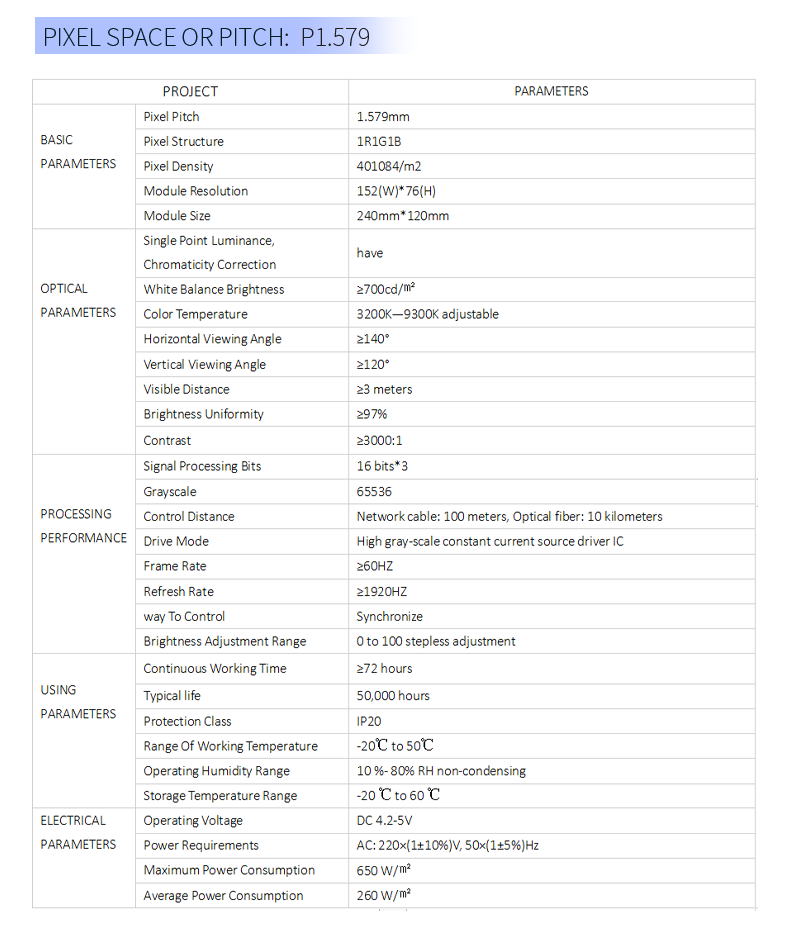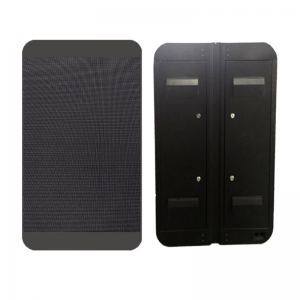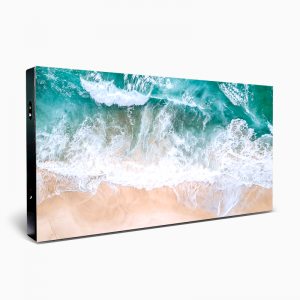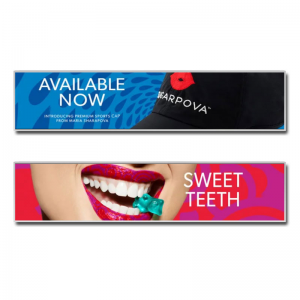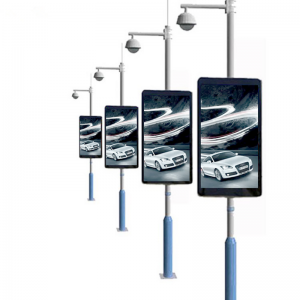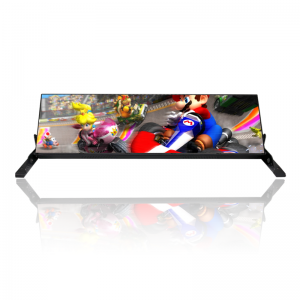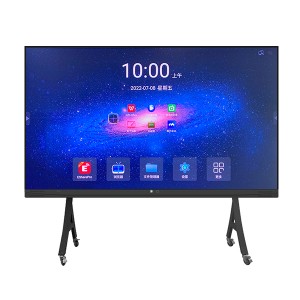LED rotating cube screen
| Model | P2-960*960*960 | P2-960*960*960 | P3-576*576*576 |
| Dot Spacing (mm) | 2 | 2 | 3 |
| Pixel density (pixels/m²) | 250000 | 250000 | 111111 |
| Overall resolution (W×H) | 480*480*6 sides | 480*480*6 sides | 192*192*6 sides |
| Module size (W×H) | 320*160mm | 320*160mm | 192*192mm |
| Dot Spacing (mm) | 2 | 2 | 3 |
| Pixel density (pixels/m²) | 250000 | 250000 | 111111 |
| Overall resolution (W×H) | 480*480*6 sides |
480*480*6 sides |
192*192*6 sides |
Our Services
1. 27 Years professional led display manufacturer,
2. Shot delivery time: 5-15days.
3. Factory price.
4. OEM and ODM service
5. We can design special product for you.
6. 30% deposit for producing,70% balance to be paid before shipment.
7. EXW, FOB, CIF C&F, FCA, DDU, colorful trade term.
After-sales service:
1) Service principles: response in time, solve problems as soon as possible and ensure the use.
2) Service period: In the Maintenance period of the LED screen body, free of all maintenance charges; After Maintenance period, only charge the material costs fees free of manual work fees.
3) Service scope: If the users find any problem that cannot be solved, please contact with our company, we can response in 24 hours. In order to shorten the maintenance time, Our Company will deploy some spare parts such as power and chips etc.
4) Under normal use and storage, Our Company will be responsible for the equipment.
2. Pre-sales service:
1) Our company can arrange professionals to conduct site installation and debugging in strict accordance with the requirements of the schemes and the original manual. If there is any special requirement, it is necessary to make changes of part installation scheme, we will coordinate with users. Our company can ensure the consistence of completion time and contracted time. Any problems caused by natural factors or man-made, we will discuss with client to find solutions.
2) Our company can train the users based on the manual. The training include system use, system maintenance and equipment protection
FAQ
Q1. Can I have a sample order for led light?
A: Yes, we welcome sample order to test and check quality. Mixed samples are acceptable.
Q2. What about the lead time?
A: Sample needs 3-5 days, mass production time needs 1-2 weeks for order quantity more than
Q3. Do you have any MOQ limit for led light order?
A: Low MOQ, 1pc for sample checking is available
Q4. How do you ship the goods and how long does it take to arrive?
A: We usually ship by DHL, UPS, FedEx or TNT. It usually takes 3-5 days to arrive. Airline and sea shipping also optional.
Q5. How to proceed an order for led light?
A: Firstly, let us know your requirements or application.
Secondly, we quote according to your requirements or our suggestions.
Thirdly customer confirms the samples and places deposit for formal order.
Fourthly We arrange the production.
Q6. Is it OK to print my logo on led light product?
A: Yes. Please inform us formally before our production and confirm the design firstly based on our sample.
Q7: Do you offer guarantee for the products?
A: Yes, we offer 2-5 years warranty to our products.
Q8: How to deal with the faulty?
A: Firstly, our products are produced in strict quality control system and the defective rate will be less
than 0.2%.
Secondly, during the guarantee period, we will send new lights with new order for small quantity. For
defective batch products, we will repair them and resend them to you or we can discuss the solution
including re-call according to real situation.
| Q: What is the brightness, viewing angle and wavelength of the LED? |
| A: Luminous Intensity is equal to the amount of luminous flux emitted into a very small solid angle at a defined angular orientation from the light source. The measurement for luminous intensity is the candela. Symbol is Iv.Viewing Angle is the total cone angle in degrees encompassing the central, high luminous intensity portion of the LED beam from the on-axis peak to the off-axis point where the LED intensity is 50% of the on-axis intensity. This off-axis point is known as theta one-half ( 1/2). Two times 1/2 is the LEDs' full viewing angle; however, light is visible beyond the1/2 point.Wavelength is the distance between two points of corresponding phase and is equal to waveform velocity divided by frequency. It defines what color human eyes could recognize |
| Q: What is dominant wavelength? Please specify the ranges of wavelength in red, green and blue color respectively. |
| A: Dominant wavelength is defined as the best range of wavelength showing the most natural color recognized by human eyes. Researches indicate that fixed colors with wavelength of 620-630nm (red), 520-530nm (green) and 460-470nm (blue), in fact mixed in a particular proportion, can get the pure white. That is, in display field, people use luminous materials with above wavelength to make "compounded" white more natural.In order to get a good balance white led display, we specify the led colors with wavelength within 4nm for each color |
| Q: Which chip vendors are you buying from? |
| A: It depends on the Customer's requirement. We can purchase from Japan, Korea, Europe, USA. We are using chips mainly from Taiwan |
| Q: What is the chip size you're using for outdoor display? How about indoor display? |
| A: For outdoor display, we're using 12mil chip for red, 14mil for both green and blue. Regarding indoor display, 9mil for red, 12mil for green and blue are currently adopted |
| Q: How much will the brightness of LED drop down after 1000hrs? |
| A: Based on the result of aging test, the brightness decay of green LED is around 5%-8%, while blue is around 10%-14% and red is around 5%-8% |

Solutions to problems with splicing screens
Today, there are more and more users installing LCD splicing screens in conference rooms, but there is a problem of chromatic aberration of LCD splicing walls. Generally, the chromatic aberration of LCD splicing screens is mainly reflected in the inconsistent brightness and chromaticity of the picture, which will make a certain part of the picture particularly bright or Especially dark, based on these problems, share the reasons and solutions.
The unsynchronized brightness and chromaticity of the splicing screen will cause the screen to have a difference in brightness and chromaticity, which usually causes the screen to be unsynchronized, resulting in unsynchronized brightness between the splicing screens. If the brightness is not synchronized, one side will be dark and the other side will be bright. Or there is a deviation in the local color, which is the usual mosaic phenomenon.
Since the LED is a self-luminous body, the luminous intensity is proportional to the current supplied to it within the range. In the process of circuit design, production, installation and debugging, by reasonably controlling the current flow into the line, the brightness between the splicing screens can be reduced. difference.
The program is wrong. At this time, there are several ribbon loops (self-check) on the screen image, or the screen is black or ghosting. The program size of the splicing box does not match the screen you click. At this time, you can change the program or select the corresponding screen to use. The screen cable is not plugged in properly, the contact is poor, or the signal cable is incomplete: at this time, the screen will shake when the screen cable is shaken, and corresponding countermeasures will be made according to the response of the screen. The signal line is bad, the line resistance of the signal line is large or the error is large, and the signal terminal error of the signal distributor or the matrix machine is large. There is a difference in brightness and darkness between the upper and lower ports of the device.
The problem of chromatic aberration and brightness is mainly due to the wavelength difference between LEDs. The wavelength is a fixed optical parameter and cannot be changed in the later stage. But we can reduce this difference during production.
(1) Select the LEDs produced in the same batch. Between the LEDs produced in the same batch, the difference between them will be very small, which effectively ensures the same chromaticity and can meet the actual needs of many LED companies.
(2) Using a spectroscopic color separation machine. Among the products, choose the ones with similar color and brightness. The screening effect is very good, the difference in color is effectively controlled, and the requirement of consistent brightness is achieved by sorting the light intensity under the same voltage.
|
project |
parameter |
Remark |
|
|
BASIC PARAMETER |
pixel pitch | 1.875mm _ | |
| pixel structure | 1R1G1B | ||
| pixel density | 284444 /m 2 | ||
| Module resolution | 128 (W)* 64 (H) | ||
| Module size | 24 0mm* 12 0mm | ||
|
OPTIC PARAMETER |
Single point luminance, chromaticity correction | have | |
| white balance brightness | ≥700 cd/㎡ | ||
| color temperature | 3200K—9300K adjustable | ||
| Horizontal viewing angle | ≥ 140° | ||
| vertical viewing angle | ≥ 120° | ||
| Visible distance | ≥3 meters | ||
| Brightness uniformity | ≥97% | ||
| Contrast | ≥3000:1 | ||
|
PROCCESSING PERFORMANCE |
Signal processing bits | 16 bits*3 | |
| grayscale | 65536 | ||
| control distance | Network cable: 100 meters, Optical fiber: 10 kilometers | ||
| drive mode | High gray-scale constant current source driver IC | ||
| frame rate | ≥ 60HZ | ||
| refresh rate | ≥ 1920 Hz | ||
| way to control | Synchronize | ||
| Brightness adjustment range | 0 to 100 stepless adjustment | ||
|
OPERATION PERFORMANCE |
Continuous working time | ≥72 hours | |
| Typical life | 50,000 hours | ||
| Protection class | IP20 | ||
| range of working temperature | -20℃ to 50℃ | ||
| Operating humidity range | 10 %- 80% RH non-condensing | ||
| Storage temperature range | -20 ℃ to 60 ℃ | ||
|
ELECTRIC PARAMETER |
Operating Voltage | DC 4.2-5V | |
| Power Requirements | AC: 220×(1±10%)V, 50×(1±5%)Hz | ||
| Maximum power consumption | 650W/ ㎡ | ||
| Average power consumption | 260W/ ㎡ | ||



